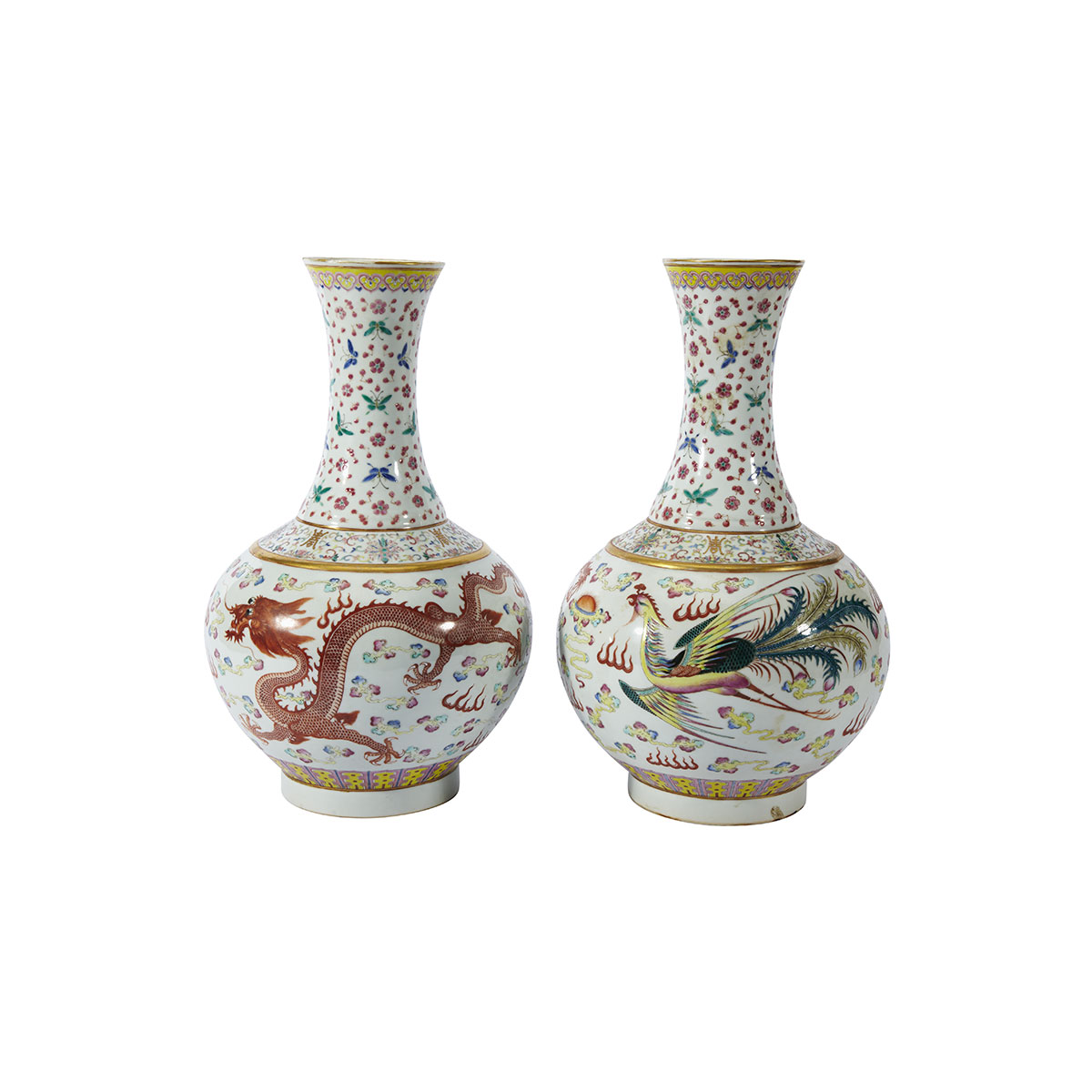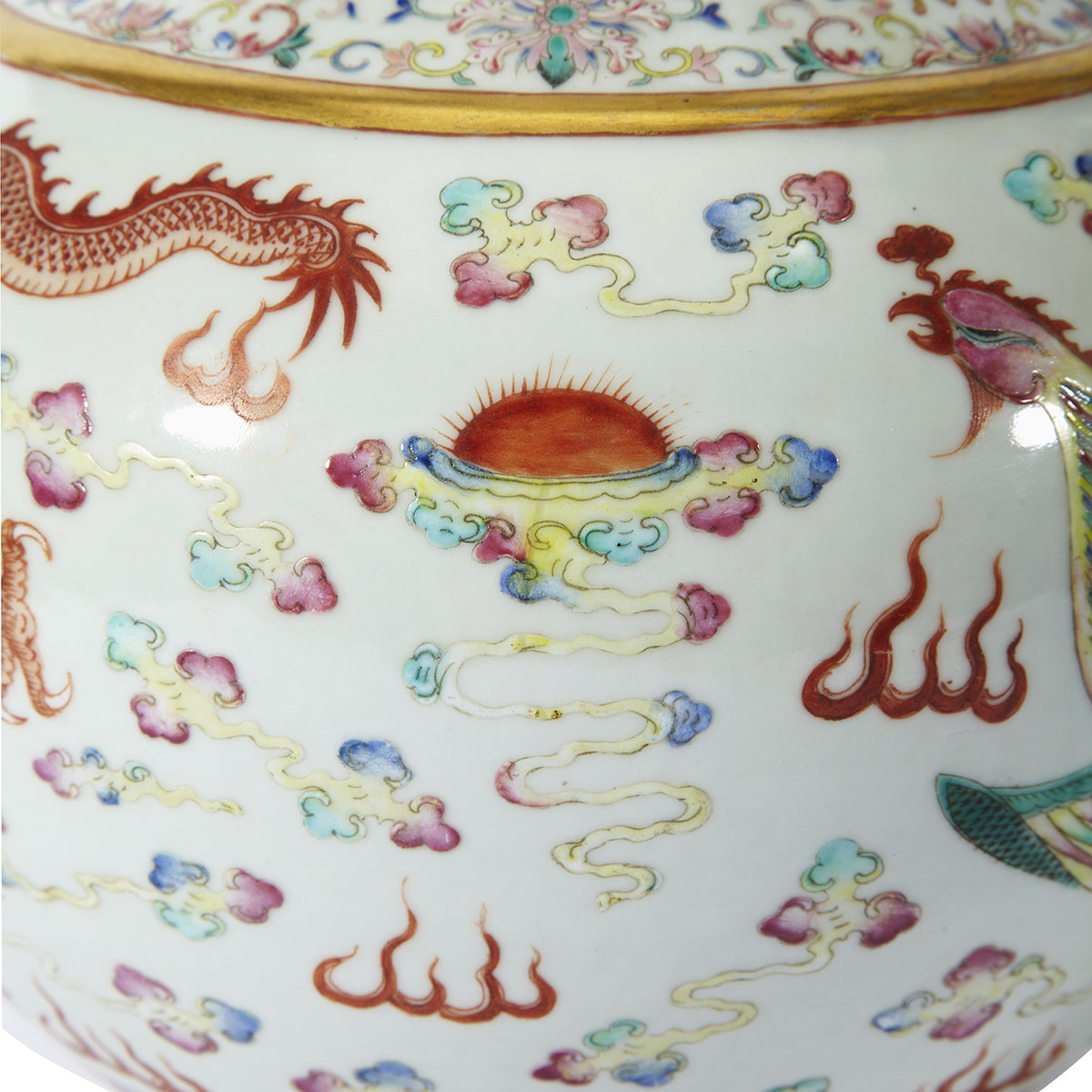Lot 204
Pair of Famille Rose ‘Dragon and Phoenix’ Vases, Guangxu Mark and Period (1875-1908)

Lot 204 Details
Pair of Famille Rose ‘Dragon and Phoenix’ Vases, Guangxu Mark and Period (1875-1908)
Raised on a tall foot, the bulbous form body depicting a confronting dragon and phoenix contained beneath a border of scrolling vines and lotuses, the slender neck rising towards a slightly flared gilt rim and delicately painted with butterflies and prunus flowers
height 15.4" — 39 cm.
six-character Guangxu mark
Estimate $6,000-$8,000
Additional Images

Provenance:
Acquired in Peking circa 1900 by John Henry Hinton, the Shanghai managing director for the British piano manufacturer Samuel Moutrie, while he worked in China between 1894 and 1914. After leaving China with his wife and four children, Mr. Hinton and his family traveled back to England before moving to New York and San Francisco, and finally settling in Vancouver Island, British Columbia, in 1920. The vases were bequeathed to his third daughter after his death in 1948.
Note:
With its first appearance dating back to the Neolithic period (c. 6500-1700), the dragon has an extensive history within Chinese art. Although there are nine different identifiable types of this mythical beast, each a composite of various animals, most retain similar features including: a sinuous appearance, scaly skin, whiskers, and horns. As the highest-ranking animal within the Chinese animal hierarchy, the dragon is meant to be awe-inspiring and a symbol of power. Similarly, the phoenix, which first appeared in the visual arts around the Six Dynasties period (CE 220-589), is a highly revered animal within Chinese arts and folklore. It too has features comprised of various different animals. Together, the dragon and the phoenix form a conjugal pair representing balance between yin and yang (male and female). In this pairing, the dragon assumes the male position while the phoenix traditionally represents the female.
This motif of the dragon and phoenix is commonly used as a symbol of marriage and union, as in the example of these vases. The matrimonial nature of this depiction is further enforced with the presence of the butterfly and prunus pattern along the neck, which is symbolic of permanent fidelity.







